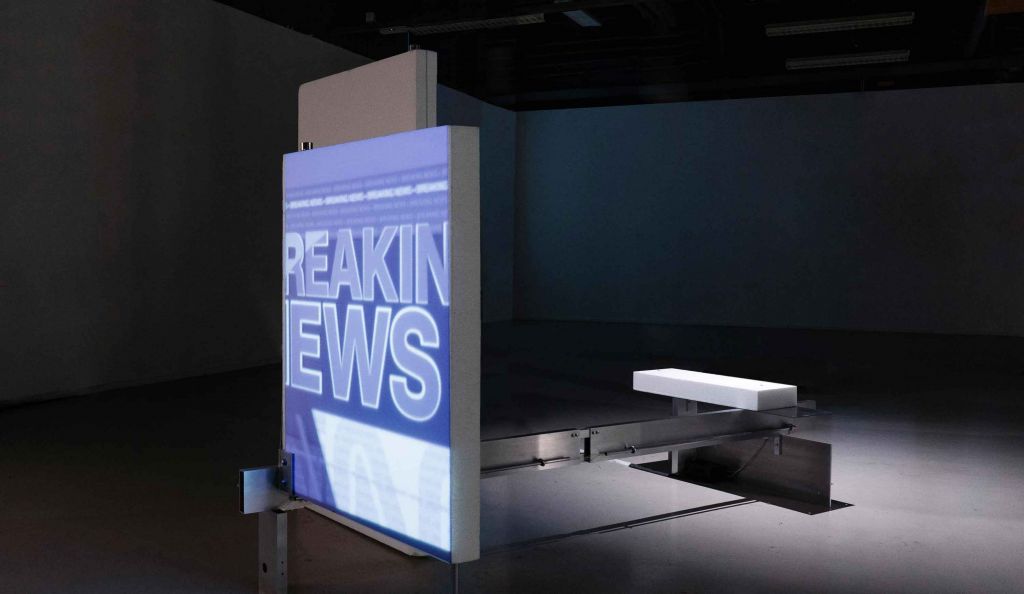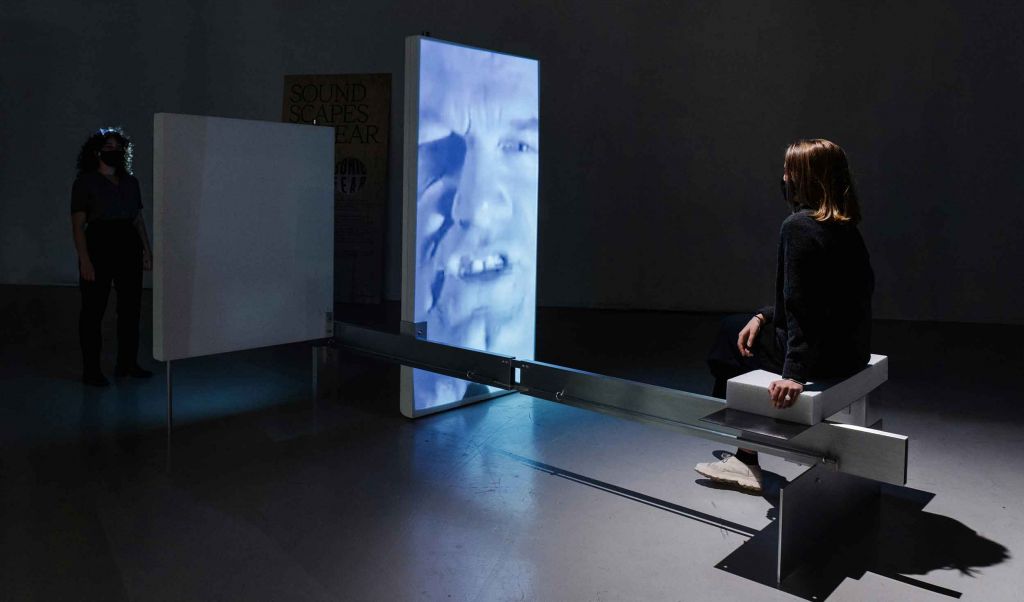Words by Ana Prendes

Evolving practices on sound art reveal a broader cultural awareness that sight does not exclusively govern our perception of reality. Emerging as an open-ended practice in the 1960s, sound-based works brought to the forefront previously excluded voices, noises, silences, and the act of listening. These sound-based artworks might be multimedia installations, interactive VR environments, performances, or audio files available on streaming platforms.
Historically, art theorists have debated this category’s meaning and scope. Avoiding the distraction of academic debates, artists working with sound have engaged in new forms of aesthetic encounters with natural environments, technological and scientific advances, cultural systems and psychological states.
The constant background buzz in our noisy world creates a soundscape that mediates our lives and triggers our emotions. Colette Aliman and Lauriane Heim, the two design researchers behind the Rotterdam-based studio Studiocalh, explore the relation between sound and the spectrum of fear in their collaborative research. Their moment of enlightenment occurred while looking at various sounds extracted from mass media and pop culture. Within these daily experiences, they realised that hearing was the most acute sense in terms of capturing information and provoking distress, apprehension and alertness.
About the intellectual process behind their project, Studiocalh explained: In an era where visual abundance reigns, hearing is considered an underrated sense. However, sound also carries information that can be warped, detached, and re-attached to new sound sources. […] From the phonograph to streaming platforms, we can access, tactfully move, play, and repeat sounds to our whim in our environment. However, this exposure to sounds from popular and trending sources, such as film, news, and music, convey and repeat emotions tied to the spectrum of fear.
The podcast series Conversing Our Soundscapes of Fear is the first outcome of their research. Produced for the FORMAT talent development program at Z33 Kunstencentrum (Hasselt, Belgium) and supported by the Creative Industry Fund NL, conversations and performances explore the correlations between the feeling of fear and sound. The materialisation of this project is the audiovisual installation Soundscapes of Fear, which was on view this last October in the exhibition What A Time To Be Alive hosted by the Temporary Art Centre in Eindhoven, the Netherlands.
The term soundscape was originally coined by Michael Southworth and later popularised by Murray Schafer, music composer and founder of the World Soundscape Project. As humans perceive, a soundscape is the sum of naturally occurring acoustics from geophysical forces and living organisms with human-generated sounds, such as language, musical composition, sound design, and technological soundtracks. The installation Soundscapes of Fear acts as a viewing station expanding the definition of the soundscape to explore the influence of the acoustic environment on our spectrum of fear.

The installation consists of two viewing stations populated with sound vibration exciters. The video projection appropriates imagery from popular culture, while the mechanically-generated vibrations are translated into auditory information, inducing alertness.
This audio-visual experience recreates our growing exposure to the media’s manipulations of our fear triggers. The installation aims to create an understanding of what parts of our daily soundscapes and from which mediums our fear spectrum is triggered. Advocating for fear sounds to be more understood, a conversation is created around this silent topic.
Studiocalh commented on the outcomes of the project. The aluminium-based structure was specifically designed to facilitate the dispersion of the sound waves across its surface, converting the mechanical installation into an immersive speaker.
This research’s complexities and delicate nature led the two designers to establish transdisciplinary dialogues with specialists in psychoacoustics, biology and sociology. These conversations turned into more thought collaborations during the research phase.
Working with Karena Kalmbach, a professor in Social and Cultural History of Technology at the Eindhoven University of Technology, Colette and Lauriane studied the sounds of the DP-3 radiation measuring device in the 2019 HBO series Chernobyl. This apparatus continuously controlled the emotional atmosphere during the story’s development.
The sound of the DP-3 became the soundmark of the nuclear disaster, known as the sound of death. As Studiocalh explained: The Chernobyl TV show reiterates and echoes the connection of sound to fear to the audience. This fear is linked to radiation and, therefore, to death. The studio is also inspired by how sound mediates the relationship between resistance and power.
Along with the installation, the panel Sound Design and the Spectrum of Fear was live-streamed during the Dutch Design Week 2020. Are we living in an increasingly safer world? What would be the value of focusing on sound as a primary sensory input? What can we learn when we consider fear from a sonic perspective?
Moderated by Studiocalh, sound designer Marylou Petot, audio scientist Toros Senan and professor Karena Kalmbach explored our current context of fear and its relation to ambiences. The discussion brought together different acoustic disciplines and dived into the connection between society, fear, and sound.
Looking at our current situation, we might feel we are living in a fearful time. Our daily soundscapes define communities – their boundaries, actors, and geographic intricacies – and trigger individual physiological and psychological responses.
Investigating sound’s physical, cultural, and social reverberation, artists have the language to explore alternative narratives in our visually dominated world that revolve around the concerns at the forefront of society’s anxieties.
As Studiocalh remarked, sound carries information to our ears and is a vibrational force capable of travelling through bodies and even elevating our adrenaline and nervous system.[…] We find that design research is necessary within the sonic genre, as sound can impact us on subliminal levels. We question the sonic borders of design and advocate for sound to be used as a tangible material.






